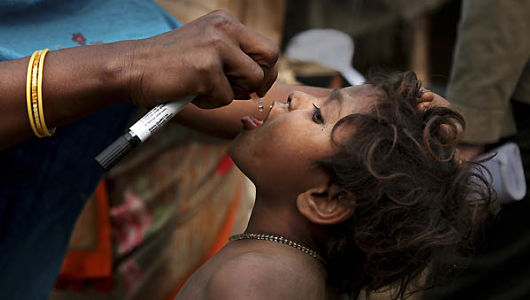 More than 300 million people worldwide are infected with Hepatitis C. With recent efforts to increase access to the Hepatitis C cure, elimination of the virus is now possible, according to the World Hepatitis Alliance.
More than 300 million people worldwide are infected with Hepatitis C. With recent efforts to increase access to the Hepatitis C cure, elimination of the virus is now possible, according to the World Hepatitis Alliance.
Over the past two years, three million people around the world were treated for Hepatitis C. The biggest deterrent to access to the Hepatitis C cure was funding, with prices for the drug being as much as $1000 for one pill. Fortunately, though, Doctors Without Borders has made access to the drug treatment available at a much more affordable price.
Gilead Sciences released their cure for Hepatitis C, known as sofosbuvir, in 2013 at $1000 per pill. In 2015, Bristol-Myers Squibb released a similar treatment, known as daclatasvir, for $750. Recently, Doctors Without Borders was able to make generic forms of the drug available for as little as $1.40 per day, according to Reuters.
This is a major victory, as a large amount of the Hepatitis C population lives in low and middle-income countries. For them, a $1000 price tag is not affordable. The accomplishment means that more people will be able to access treatment.
The World Health Organization (WHO) has a goal of eliminating viral hepatitis by the year 2030. Because of the increased availability of the Hepatitis C cure, this can become a reality. However, the cure alone is not the only way for the virus to be eliminated.
There are key factors that WHO has outlined as steps necessary to eliminate Hepatitis C, but many countries have failed to implement them. These setbacks include a lack of political will and global funding mechanisms, poor data and surveillance, access to diagnostics and medicines and poor diagnosis rates, according to the World Hepatitis Alliance.
With that being said, there are currently nine countries on track to eliminate Hepatitis C by 2030, and three of them are developing countries. The countries are Australia, Brazil, Egypt, Georgia, Germany, Iceland, Japan, the Netherlands and Qatar.
Egypt has been innovative in implementing strategies that could eliminate the virus. So far, they have “pledged to test 30 million for hepatitis C by the end of 2018 by implementing mass screening initiatives (including assistance from the military), as well as mass-producing generic copies of DAA drugs for under U.S. $200 per 12-week course.”
By the same token, Brazil has “committed to gradually lift treatment restrictions in 2018, meaning that the country will be able to treat all people infected with hepatitis C.” In the past, the sickest patients have had priority for treatment.
When countries began to make the elimination of Hepatitis C a priority, the world will see results. Mongolia, Gambia and Bangladesh are among the countries that have begun to make progress towards getting on track to eliminate Hepatitis C. As more countries follow their lead, the goal of eradication will be reached sooner.
– Dezanii Lewis
Photo: Flickr
 Every news report seems to be about a new political scandal, a terrorist attack or some natural disaster. The world feels like it is getting worse, and the uplifting stories on the news appear insignificant compared to the weight of the other issues.
Every news report seems to be about a new political scandal, a terrorist attack or some natural disaster. The world feels like it is getting worse, and the uplifting stories on the news appear insignificant compared to the weight of the other issues.




